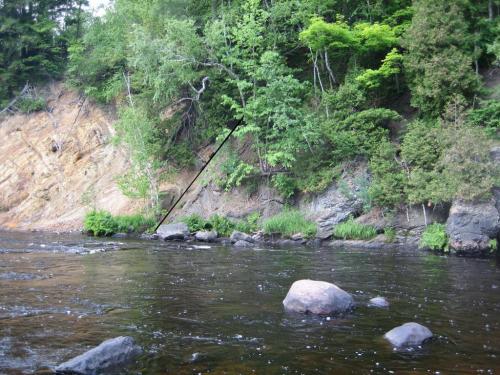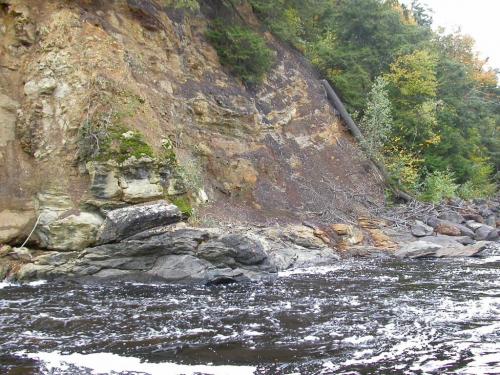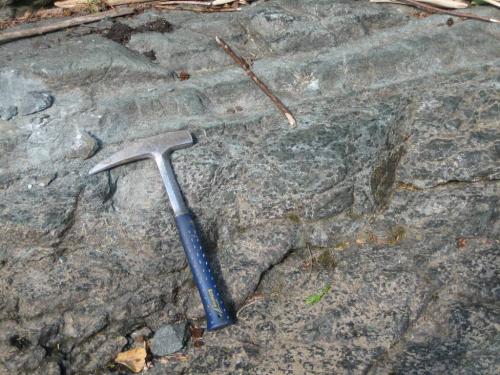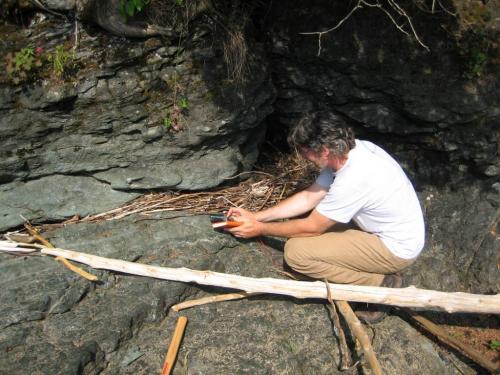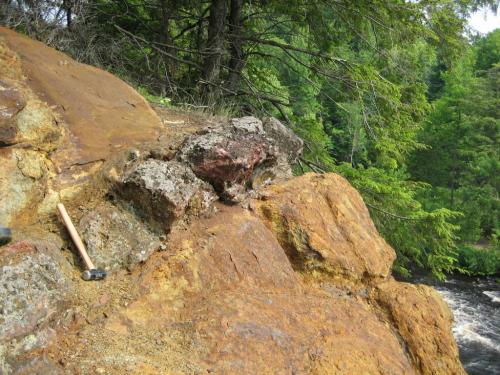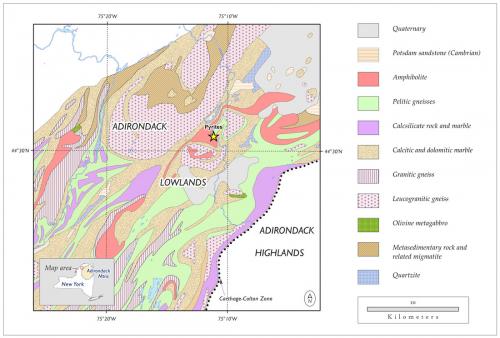The Pyrites Complex represents a 1200 and 1160 Ma old fragment of oceanic crust and upper-mantle rocks that were pushed onto the continent during the Shawinigan orogenesis. The discovery of this incomplete ophiolite slab has significant paleo-tectonic implications; it offered us new insights into the Precambrian geology contributing to the better understanding of the geological history and evolution of the Adirondack Mountains, especially the Adirondack Lowlands.
Pyrites Complex, Adirondack Lowlands
Brief Regional Geology
In the Adirondack Mountains of New York, the Adirondack Lowlands domain contains sequences of shallow-water carbonates, evaporites, and talc schists (Upper Marble Formation) “sitting” on the Popple Hill gneiss that includes metamorphosed slates, mudstones, sandstones, and volcanogenic sequences. The Popple Hill gneiss overlies the Lower Marble Formation, a unit consisting of calcitic marbles, calc-silicates, quartzites, gneisses, and tourmaline-rich units. Diverse igneous rocks intruded the marbles and gneisses ca. 1150—1200 million years ago (Ma). Various mafic rocks are distributed all over the Lowlands within all the three main rock suites. The rocks were deformed and metamorphosed between ca. 1190—1140 Ma at temperature of 600° to 650°C and pressure of 6 to 7 kilobars.
Pyrites Complex
Metamorphosed ultramafic rocks (Pyrites Complex) were found in structural contact with pyrite-bearing gneisses at Pyrites, Adirondack Lowlands, NY as an enclave in the Lower Marble Formation. The Pyrites Complex is part of an incomplete, highly deformed, and metamorphosed ophiolite obducted during Shawinigan orogenis between 1200 and 1160 Ma and is interleaved with metamorphosed sedimentary rocks. The complex consists of a layered, altered, and metamorphosed lherzolite to pyroxene hornblende peridotite core with peripheral gabbro units that transition into amphibolite and hornblende schists. The sequence is cut by an undeformed phlogopite lamprophyre dike (2 m wide). Decimeter to meter scale layers of knobby weathered pyroxenite, and massive to weakly layered peridotite is the main textural feature of the core. The cropping out area occupied by the Pyrites Complex is modest, but gravity measurements of Revetta and McDermott (2003) suggest o large volume of dense rocks occurring at depth.
The mineral composition of the complex records relics of augite (to 1.25 wt. % Cr2O3), diopside, and magnesiohastingsite. Most of the original minerals were replaced by magnesium-rich, hydrous secondary minerals such as serpentine (to 1.56 wt. % Cr2O3), tremolite, talc, chlorite, and dolomite. Magnetite, chromite, in places with magnetite rims, ilmenite, and fluorapatite are accessory minerals.
Geochemically, the rocks range from 33. 74 to 52.09 wt. % SiO2, with ultramafic cumulates containing 25—33 wt. % MgO and up to 4,243 ppm Cr and 1,588 ppm Ni. Normalized REE and incompatible element patterns display enrichment in light rare earth elements and deplation in Nb, Ta, and Zr relative to chondrites and primitive mantle as result of the crustal contamination.
Petrographic observation in thin sections and under scanning electron microscopy revealed the occurrence of some tiny zircon crystals. The zircons were analyzed by cathodoluminescence (CL), sensitive high resolution ion microprobe (SHRIMP), and laser ablation-inductively coupled plasma-mass spectrometry (LA-ICP-MS) and yielded two groups of ages: a) 1202 ±20 Ma; b) 1140 ±7 Ma (SHRIMP) and 1197 ±5 Ma (LA-ICP-MS).
Some samples were analyzed for Rb-Sr and Sm-Nd istopic systematics. Neodymium TDM ages range between 1450 and 2620 Ma.
Calcite samples collected from undeformed veins yield values between -6.975 and -7.358 (δ13CPDB) and 15.629 and 15.668 (δ18OSMOW).
Origin
The Pyrites Complex is thought to originate as part of the Trans-Adirondack backarc basin developed between the Frontenac terrane and southern Adirondacks. It represents a very good example of the oceanic crust and upper-mantle rocks obducted onto the continent and interleaved with supracrustal metasedimentary rocks.
References
J. Chiarenzelli, M. Lupulescu, E. Thern, B. Cousens (2011) “ Tectonic implications of the discovery of a Shawinigan ophiolite (Pyrites Complex) in the Adironack Lowlands. Geosphere, V. 7, p. 333-356.
Revetta, F.A., and McDermott, A. M., 2003, The compilation and preparation of high-resolution gravity data for petroleum exploration in New York State and adjoining regions: New York State Energy Research Development Authority (NYSERDA) PON 715-02.


